Highlights:
- Woodcut prints that explore the fragile threshold between body, time, and transcendence
- Inspired by Baul mystics like Lalon Shai and Shah Abdul Karim, as well as sculptural forms from Michelangelo to Rodin
- Figures emerge from black holes and womb-like voids — trapped in time yet reaching for freedom
- A visual dialogue between flesh and spirit, rootedness and flight
- A bold continuation of South Asian metaphysical traditions in contemporary form
- Paradox becomes the path: muscular bodies dream of escape through light, memory, and love
- Expressionist in tone, haunting in imagery — a theatre of becoming
I imagine Tarek Amin (Ruhul Amin Tarek) has a singular vision as his hands work on his craft, his measuring eyes, the membranes of his fingers. They are mostly woodcut prints on the threshold of becoming, from darkened holes. A human figure dangling in space, yet not without gravitational pull, the backwards tilt of the head is like a modern-day high jumper in the fall position, the muscles and ribcage straining to keep the body's mass afloat. A clock is ticking away in the background of a darkened rectangle. Is it the black hole, the womb, or the nothingness from which the first murmurings of being, its tentative emergence into light, can be heard?
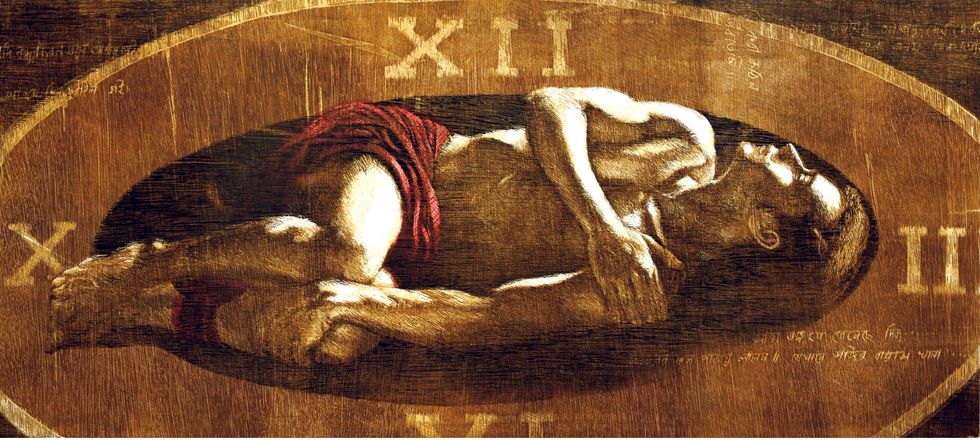
This one is in the darkened inside of a clock, as if in the womb of time, but not quite trapped in the savage tick-tock of the metronome, for the body in its stylised repose is already stirring to take flight. Why else would the face turn away from the body in its sideways position and look beyond the dark hole, beyond the frame of time?
Even the figure deep in sleep in the primal bed of the darkened womb is not as lost to time as it first appears. The legs have already wriggled their way beyond the frame. Besides, the folds of the garment covering the lower body are billowing in the wind, as if responding to the summons of the beyond to take flight into the infinite. They are all over, these black holes that imprison even a tiny flicker of light. Staged almost as an expressionist theatre reminiscent of Ludwig Kirchner et al and the Bridge Group’s woodcut prints where dark areas, looming large, provide abodes for the likes of Nosferatu or the sinister zones of danger in a Hitchcock film, but always pointing to the lighted outside, the avenue of escape, even transcendence, as Tarek Amin tends to think.
Often bathed in metamorphic ochre and orange, these figures inspired by Bengal’s deep-rooted philosophers and mystical poets, such as Lalon Shai and Shah Abdul Karim, are swept along by their melodies of love and dread, which, despite being authorised in the name of an ineffable stranger, never fail to touch the very membrane of the soul. Perhaps that’s why Tarek Amin calls this series of artwork Echoes of Existence.
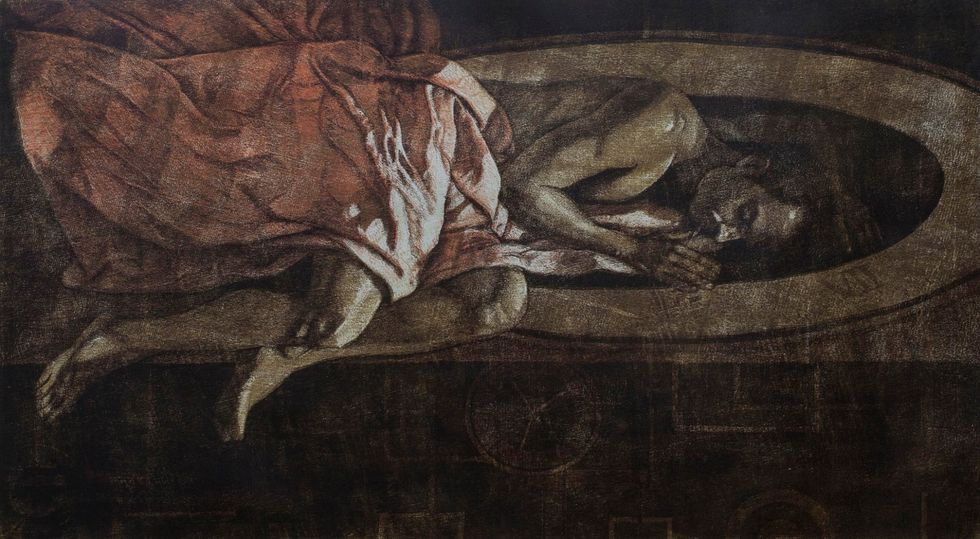
In Ovid’s Metamorphoses, Narcissus, trapped in the mirroring surface of the water, stays deaf to Echo’s lovelorn calls. From Tarek Amin’s canvases, the echoes resolute not to take no for an answer insist on being heard, even though they speak in whispers.
What do these echoes speak of? Mostly of bodies, sinuous bodies toned and chiselled like Yukio Mishima’s, destined for a metaphysical journey. These journeys are fraught with dangers, as Mishima’s have been, imploding in a manic misadventure. Tarek Amin’s bodies, taken at once from the body-centred metaphysics of the Bauls (of which Lalon Shai and Shah Abdul Karim are preeminent figures), and from the long lines of sculptures from Michelangelo to Rodin and beyond.
Auguste Rodin looked at Michelangelo, who spurred him on his creative journey. But the Frenchman, being a workman and given to the sheer materiality of objects, the thingness of things which prompted Rilke to his poetic exploration of Dinggedicht (thing-poem), gave his figures ample volume, substance, and the rough edges of their emergence. Rodin’s bodies, weighed down by their dense matter, are rooted in places. They are too heavy to take flight.
Analogous to Rodin, although working in a different medium, is the work of Bangladeshi painter SM Sultan. His embodied figures, mainly peasants bulging with muscle, know only work. Labouring in the fields, their muscles protruding all over their anatomy, creating fleshy mountains and slopes that even the likes of Arnold Schwarzenegger couldn’t dream of in their wildest imagination, is too heavy. They seem more likely to sink under their own weight than take flight. If there is an escape route for them, it is by digging deep, like Kafka’s moles.
Sure, bodies are houses of being, but some bodies are bent on dragging their being elsewhere. This, I sense, is the case in Tarek Amin’s work. Muscular bodies, bound by the sheer force of their materiality, and yet they want to fly elsewhere, it doesn’t matter how one names it: beloved, divine, or even God (Lalon imagines him as a strange neighbour in a hall of mirrors so close and yet aeons away).
It seems we’ve ended up with a paradox. Rooted in bodies and yet looking for lines of flight. Imprisoned by the clock and yet wishing to melt it away as Salvador Dalí so theatrically wanted, or as Henri Bergson so patiently waited to experience his durée, as the cubes of sugar dissolved in water, which sent young Marcel Proust wild with excitement, thinking he had found the key to retrieving lost time.
Yet paradox is not a negative force. In carnival, particularly in the Caribbean one sees some figures in their limbo dancing, lowering themselves to almost ground level to pass the bar, while others elongate themselves on stilts to touch the sky. The high and the low, all at the same time, is the force that disrupts the habitual orders of things. It unleashes the forces of creation.
Tarek Amin’s bodies, then rooted in their flesh and chiselled muscles, and in dreams of escape with the melodies of Lalon Shai and Shah Abdul Karim are the figures of freedom. It will be a bumpy ride, but I wish them well.
Exhibition Title: Echoes of Existence
Artist: Tarek Amin
Date: 20–27 June 2025
Venue: Spitalfields Studios, London E1

Manzu Islam is a British-Bangladeshi writer and academic, author of The Mapmakers of Spitalfields, Burrow, and Godzilla and the Song Bird. His fiction explores migration, racism, and cultural identity through vivid storytelling rooted in postcolonial experiences.
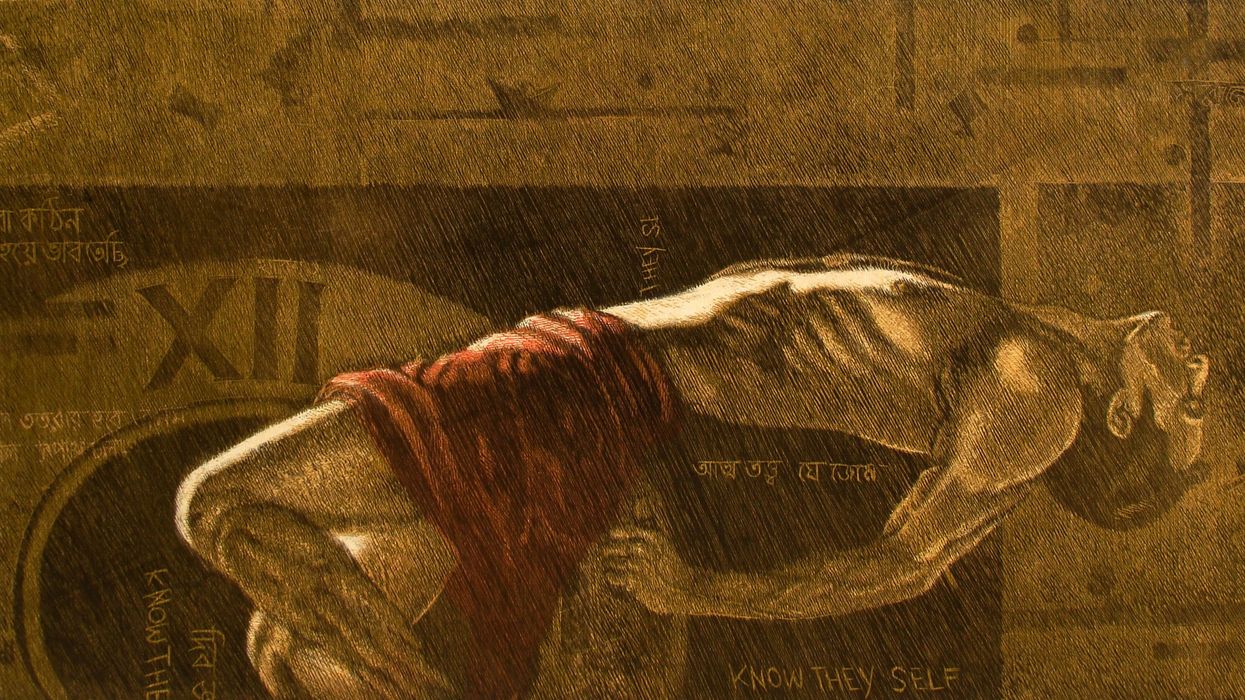

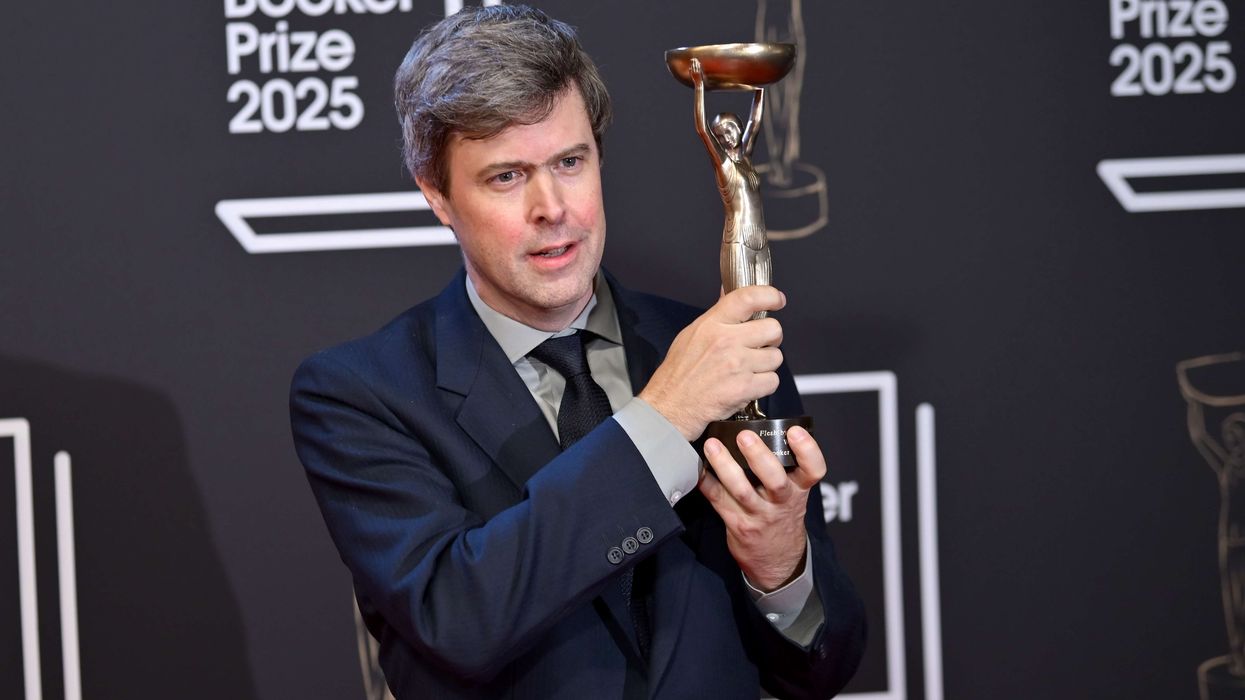



 Channi Singh OBE — founder and frontman of the pioneering bhangra band AlaapChanni Singh
Channi Singh OBE — founder and frontman of the pioneering bhangra band AlaapChanni Singh Chham Chham Nachdi Phiran (with Asha Bhosle)Channi Singh
Chham Chham Nachdi Phiran (with Asha Bhosle)Channi Singh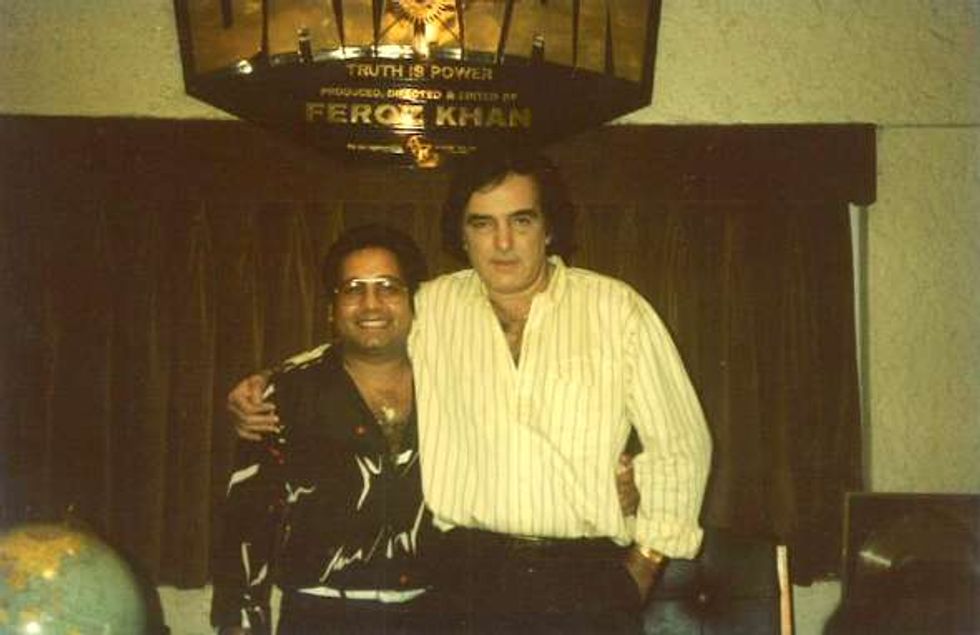 Channi Singh with Feroz KhanChanni Singh
Channi Singh with Feroz KhanChanni Singh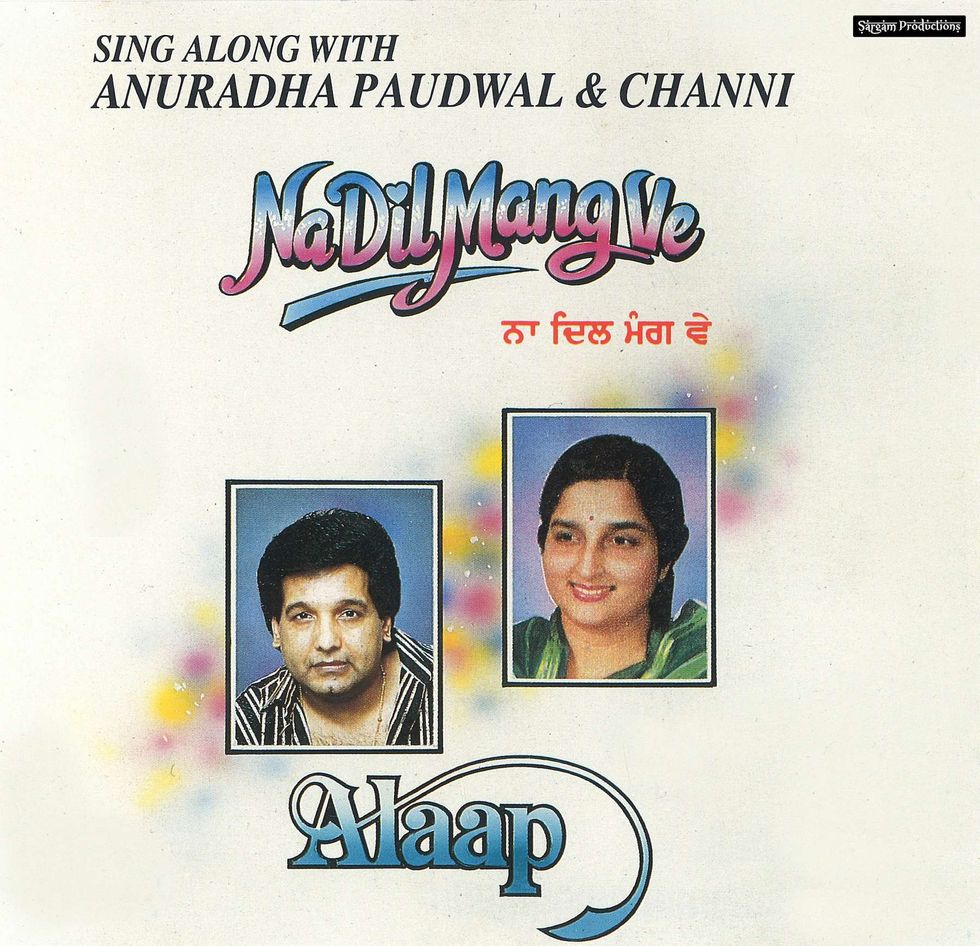 Na Dil Mang Ve (with Anuradha Paudwal)Channi Singh
Na Dil Mang Ve (with Anuradha Paudwal)Channi Singh






